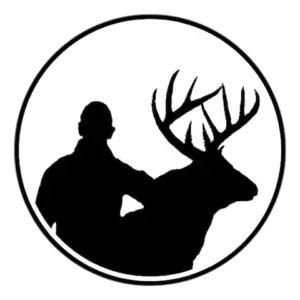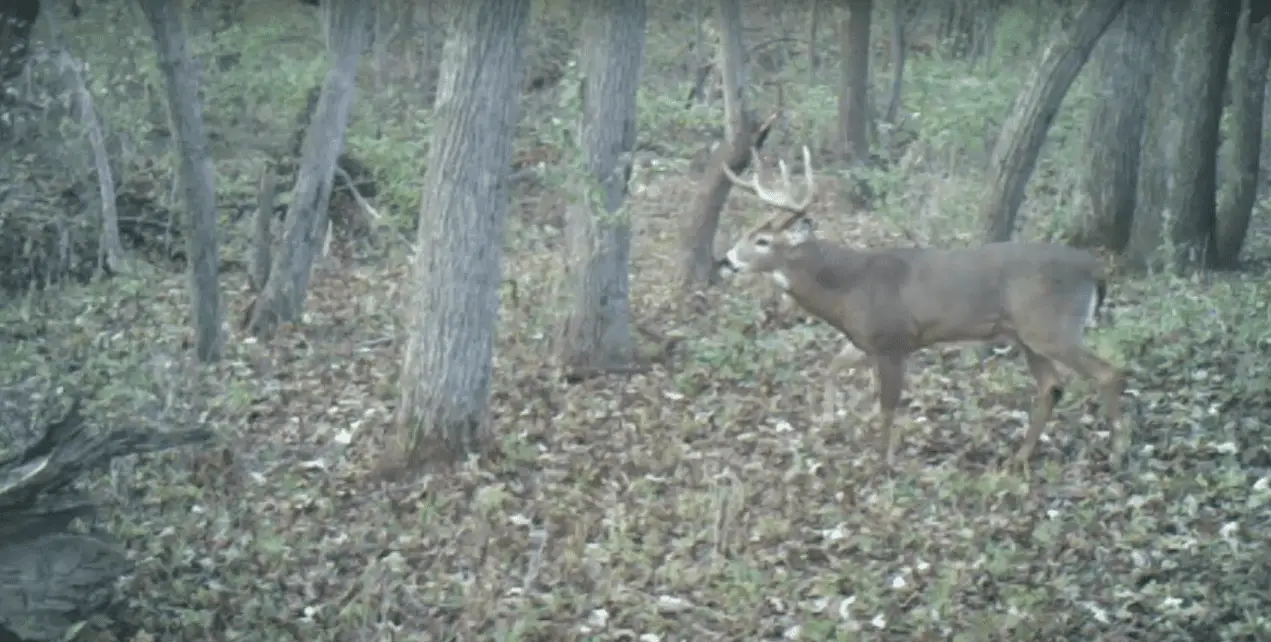To keep a buck coming back, you need to offer him security and food. The things that scare deer and keep them from returning is human pressure, social pressure from other deer, and potential predators. Also, deer have to constantly feed to survive and will always return to the best food sources so long as their security isn’t threatened.
Security
If you are going to hold deer in your area and keep them coming back then you must prevent deer from getting scared away as much as possible. Bucks are loners so give them a secure place where they can be left alone by humans and other deer. Bucks tolerate a lot less pressure than does do so don’t give them any reason to leave and entice them to stay by offering quality cover.
What scares a buck away?
I think it’s pretty obvious that most deer are scared of people and other predators such as coyotes. If you have hunted for any length of time then chances are that you have scared deer away walking into the woods. Serious hunters know that human pressure can scare deer in ways that many hunters never consider.
When you drive to your hunting spot and park, what are the odds that the deer can hear or see you park? Can they smell you or your truck? Keep in mind that deer can smell over a mile away so hopefully you’re parking in a spot where your scent isn’t blowing in the direction you expect your target buck to be.
How often do you hunt in the same location? Do you access some of your treestands while your scent blows to areas that you plan to hunt in the future. It’s really easy to alert deer of your presence without you even knowing it. Do the little things right so you aren’t educating the deer about you being there. Try thickening areas cut down on a buck’s sight line. This will make it harder for him to see you and other deer.
Social pressure from other deer is also a reason why bucks don’t keep coming back to your hunting spot. Bucks are introverts. The only time they want to party with other deer is during the rut. Sure, mature bucks will still be social with other deer during the evening feeding time, but when they are trying to relax during the day they want to be left alone.
Lastly, be cautious where you hang trail cameras because it’s proven that some bucks get spooked by them if they see them. Hang them on the outside edges of buck bedding areas and hang them high on the tree, angled downward. You can also look at buying trail camera’s that don’t flash or have any lights when they are taking a picture or video.

Food
If you are looking to target mature bucks then food is a key component to keep him in the area. Does and bucks bed in places that are near food. During the summer month’s food is everywhere. Everything is turning green and deer will pretty much eat anything. However, they do prefer certain foods at different times during the year.
Summer food plots
Depending on your deer population and size of property, planting summer food plots such as clover and alfalfa may not be your best option. For example if you have a small property and lots of does, then don’t plant summer food sources. The social pressure will be high near the food plot and most likely the buck you are after won’t reach your food plot until dark.
On the flip side, if you have a small property and a low deer population then summer food is your best option. However, no matter how the deer population is, plant a late season food source to help the deer survive through the cold months.
Learn about your property and take a trail cam survey to get a sense of how many deer are around. You might have to change your food plot strategy from year to year until you figure out the right mix of summer and winter food. The key is you want to learn from the work you put in, so make sure you monitor the activity that your food plots gets and the frequency that bucks use them during the daylight.
Fall & winter food plots
Unless I know the deer population is obviously low, I usually don’t plant any summer food plot blends. The exception is when i’m planting a fire break around a controlled burn area like switchgrass plantings. I will focus my efforts on offering a variety of different late season food plots.
Summer seed varieties are usually more expensive seeds. Avoid the mistake of planting an expensive seed type, like a perennial clover or alfalfa, that you might potentially want to kill off the following year because you found out you have too many does. It’s better to start off the first year by planting wheat, oats, rye, turnips, or corn. You will be able to monitor the deer and make adjustments for the next year.
This article of mine will give you a deeper look into the “Best fall and winter food plots for deer hunting“
Conclusion
It’s not hard to scare a buck away and never see him return. Mature bucks won’t tolerate much intrusion from anything because they want to be left alone until they are ready to be social. Humans, coyotes, cats, dogs, other deer, and trail cameras can all impact the spots where mature bucks will spend or not spend their time. If bucks aren’t getting harassed around your hunting grounds then odds are good that he will keep coming back.
This is especially true if you can maintain a quality food source during the times of year when food sources are limited. Fall and winter food plots should always be a priority in your habitat strategy if you want to keep bucks in the area, and keep them coming back to your grounds.
Keep things simple. Offer quality cover and the security that a buck needs and give him food. This is all that he needs to keep coming back. The exception is when the rut is on. There is only one thing on a bucks mind at that time of year. Happy hunting!


